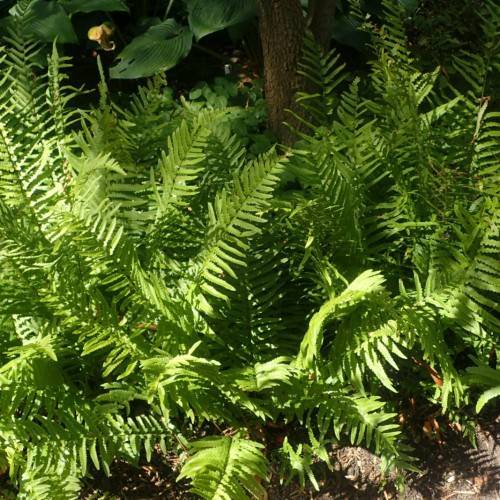
Tokyo wood fern
Dryopteris tokyoensis
Cycle:
Perennial
Watering:
Average
Hardiness Zone:
5 - 8
Flowers:
Flowers
Sun:
Part shade,full shade
Leaf:
Yes
Growth Rate:
Low
Maintenance:
Low
Care Level:
Medium
watering
Tokyo wood ferns should be watered once or twice a week depending on the conditions in the environment. It's important to give this fern adequate water so that the leaves remain a bright, deep green. The amount of water needed depends on the size of the plant, the potting mix, and the environment. In general, water enough so the soil is completely soaked each time. Do not allow the soil to dry completely between waterings. Allow the top inch or 2 to dry out before you water again. During periods of high heat or dryness, it may be necessary to water more regularly. Avoid over-watering, as this can lead to fungal diseases on foliage. The best way to check for proper moisture is to stick your finger in the potting mix to gauge its wetness.
sunlight
Tokyo wood ferns (Dryopteris tokyoensis) require indirect ambient light throughout the day, which can be provided by a western or eastern facing window. They thrive in passively sunlit spaces and can even tolerate a few hours of direct sunlight in the mornings. However, due to the species’ sensitivity to strong sunlight, it is best to limit direct exposure to a few hours a day. An ideal light cycle for Tokyo wood ferns consists of 2 to 3 hours of direct sunlight in the early morning and indirect sunlight for the remainder of the day. Especially when grown indoors, it is important to maintain regular light exposure in order for the plant to grow nicely.
pruning
Tokyo wood ferns (Dryopteris tokyoensis) should be lightly pruned twice a year – in early spring and again in late summer. Pruning should mainly consist of removing dead or damaged fronds and any vigorously growing fronds that look out of place. The fronds should be cut back to the base of the rhizome, and any excess soil should be removed from the base of the fronds. Pruning should be done after the threat of frost has passed, so as to not damage the plant. It is also important to ensure that no bacterial or fungal diseases are present prior to pruning, which could spread more easily after pruning.
